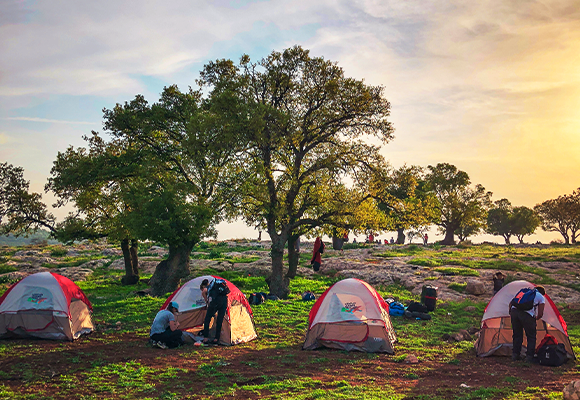Umm Qais to Ajloun
Umm Qais to Ajloun
In the most northern region of the trail, lush, green hills and canyons carry you to ancient Roman sites, over rolling hills, and through oak forests. The diverse and fertile landscape here with its ancient olive trees and hot springs bursts into bloom every spring, with the trees laden with fresh fruit. The villages here are pioneers of community-based tourism with homestays, home-cooked meals, and handicraft stalls adding a true cultural experience to this beautiful northern corner of Jordan.
Total Length: 80 KM
Days: 6 Hiking days
Main sites in the region:
- Ruins of Roman Decapolis cities at Um Qais and Pella
- Ziglab Dam
- Jesus Cave, Beit Idis Church
- Byzantine monastery ruins at Tel Mar Elias, birthplace of the prophet Elijah
- Community tourism and rural scenery in the al-Ayoun village
- Medieval mountaintop site of Ajloun Castle


Ajloun to Iraq Al-Ameer
Ajloun to Iraq Al-Ameer
This section weaves through farmland and a spattering of rural villages as you leave Ajloun and its hilltop castle behind. The trail crosses the King Talal Dam, before ascending a hilltop following rich farmlands to the village of Rmeimeen with its beautiful church spire and minaret. Winding down through fertile valleys, the trail reaches the town of Fuhais and continues to Iraq Al-Ameer.
Total Length: 74.3 KM
Days: 5 Hiking days
Main sites in the region:
- Khirbet Sarabis and Springs
- King Talal Dam
- Rmeimeen village
- Town of Fuhais

